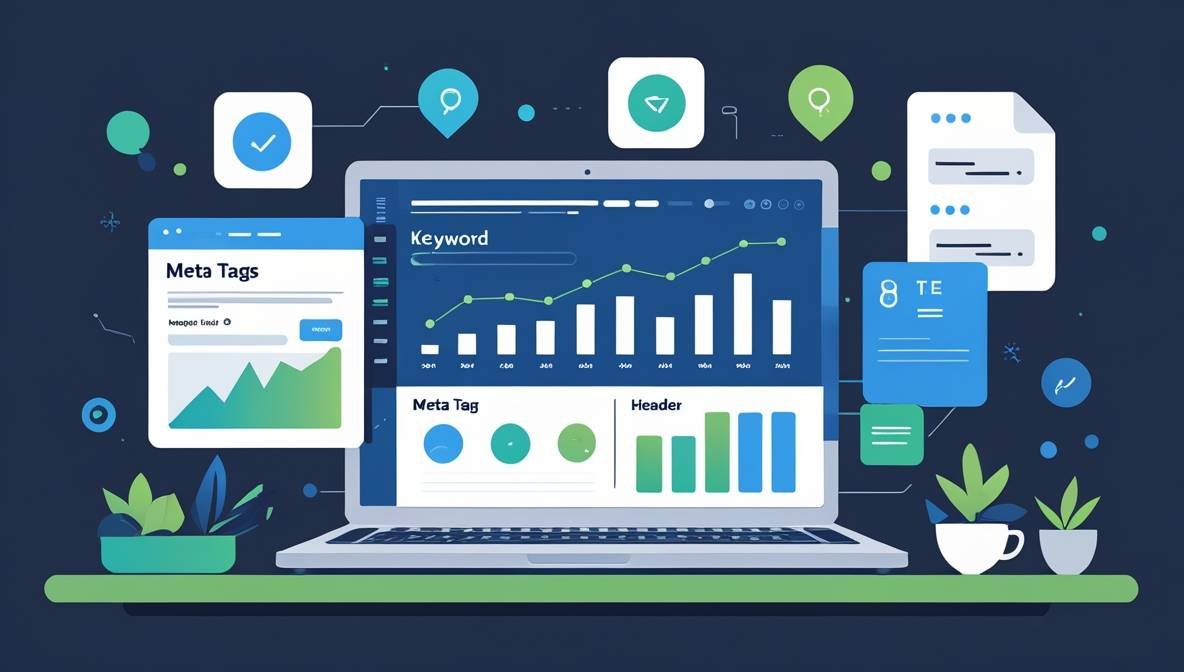On-page SEO remains the backbone of organic search success. By refining page-level elements, businesses improve visibility, user experience, and relevance for search engines. This guide details actionable strategies for optimizing content, technical setups, and semantic signals.
Core Components of On-Page SEO
1. Content Quality & Relevance
High-quality content directly impacts rankings. Search engines prioritize pages that answer user intent comprehensively. Use these principles:
- Depth: Cover topics exhaustively (1,500+ words for competitive keywords).
- Readability: Structure content with short paragraphs, bullet points, and subheadings.
- Semantic Keywords: Integrate contextually related terms (e.g., “keyword research tools” alongside “on-page SEO”).
For example, a guide to SEO-friendly CMS platforms should include semantic terms like “XML sitemaps” or “canonical tags.”
2. Keyword Optimization
Target primary and secondary keywords using tools like Google Keyword Planner or SEMrush.
| Element | Optimization Strategy |
|---|---|
| Title Tag | Place primary keyword within first 60 characters |
| Headers (H1-H6) | Use keywords in H2/H3; avoid duplication |
| Body Content | Aim for 1-2% keyword density; prioritize LSI terms |
| Meta Description | Include primary keyword naturally; limit to 156 chars |
Avoid common keyword stuffing mistakes like unnatural repetition.
3. Technical Optimization
Technical SEO ensures crawlers index and interpret content efficiently.
- Mobile-First Design: 58% of global traffic comes from mobile. Test responsiveness using Google’s Mobile-Friendly Test.
- Page Speed: Achieve sub-2-second load times via image compression (WebP format) and lazy loading. Use Google PageSpeed Insights for audits.
- Structured Data: Implement schema markup for articles, FAQs, or products. Learn how to use schema.
4. Internal Linking Strategy
Internal links distribute authority and guide users. For instance, a page about voice search optimization should link to related guides like local SEO strategies.
Best Practices:
- Use descriptive anchor text (e.g., “2024 SEO trends” instead of “click here”).
- Link to cornerstone content (e.g., pillar pages) 3-5 times per article.
Advanced Tactics for 2024
Semantic Content Clusters
Group related content into topic clusters. For example:
- Pillar Page: “Complete Guide to On-Page SEO”
- Subtopics: “Keyword Research,” “Technical Audits,” “Content Optimization”
This structure strengthens topical authority. Tools like Ahrefs’ Content Explorer identify gaps in existing clusters.
Image & Multimedia Optimization
- Alt Text: Describe images contextually (e.g., “Step-by-step SEO audit checklist”).
- Compression: Reduce file sizes by 60% without quality loss using Squoosh or ShortPixel.
- Video Transcripts: Improve accessibility and keyword relevance.
E-A-T Compliance
Demonstrate Expertise, Authoritativeness, and Trustworthiness:
- Add author bios with credentials.
- Cite reputable sources (e.g., Google’s SEO Starter Guide).
- Update outdated content (e.g., refresh 2024 SEO trends annually).
Tools for On-Page SEO Success
| Tool | Use Case |
|---|---|
| SurferSEO | Content structure analysis |
| Screaming Frog | Technical audits (broken links, metadata) |
| Clearscope | Semantic keyword recommendations |
| Yoast SEO | WordPress-specific optimizations |
For small businesses, explore cost-effective SEO tools.

